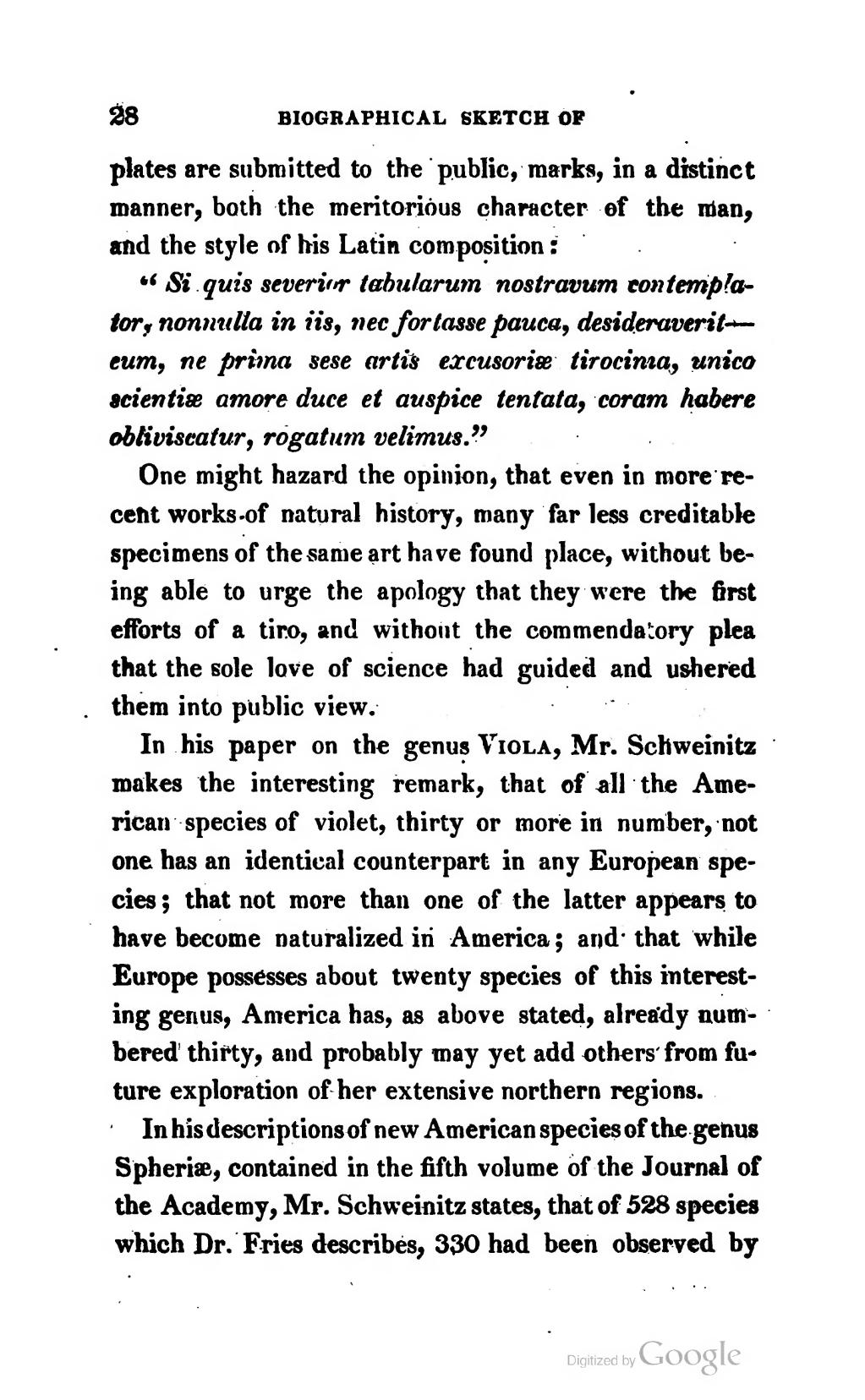plates are submitted to the public, marks, in a distinct manner, both the meritorious character of the man, and the style of his Latin composition:
"Si quis severior tabularum nostravum contemplator, nonnulla in iis, nec fortasse pauca, desideraverit—eum, ne prima sese artis excusoriæ tirocinsa, unico scientiæ amore duce et auspice tentata, coram habere obliviscatur, rogatum velimus."
One might hazard the opinion, that even in more recent works of natural history, many far less creditable specimens of the same art have found place, without being able to urge the apology that they were the first efforts of a tiro, and without the commendatory plea that the sole love of science had guided and ushered them into public view.
In his paper on the genus Viola, Mr. Schweinitz makes the interesting remark, that of all the American species of violet, thirty or more in number, not one has an identical counterpart in any European species; that not more than one of the latter appears to have become naturalized in America; and that while Europe possesses about twenty species of this interesting genus, America has, as above stated, already numbered thirty, and probably may yet add others from future exploration of her extensive northern regions.
In his descriptions of new American species of the genus Spheriæ, contained in the fifth volume of the Journal of the Academy, Mr. Schweinitz states, that of 528 species which Dr. Fries describes, 330 had been observed by
